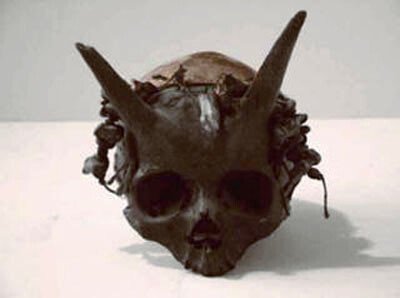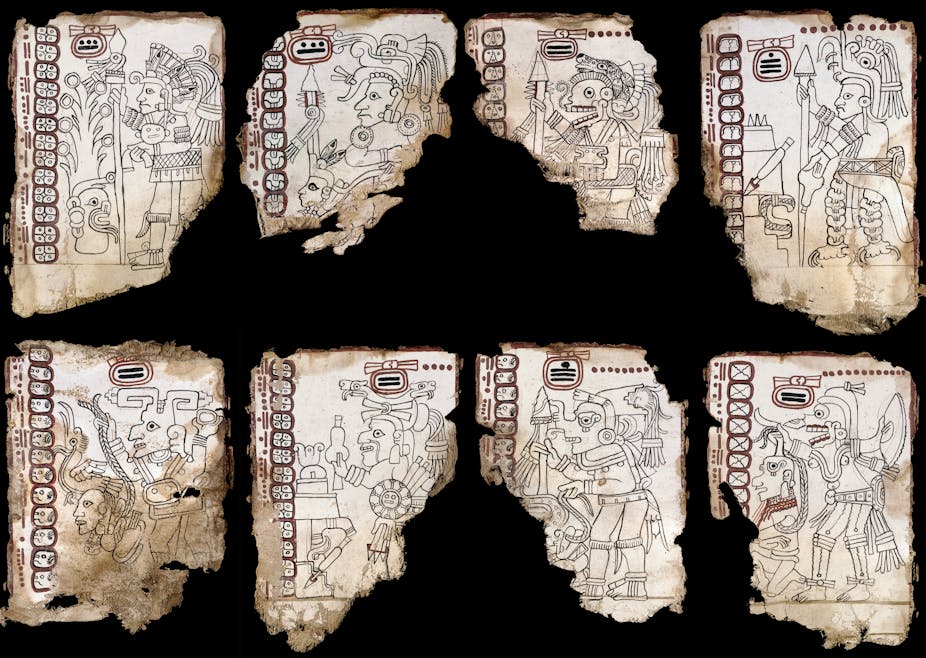Archaeologists And Historians Were Forbidden To Study These Finds, So As Not To Rewrite History

Fragments of a Biblical scroll have been discovered in desert caves in Israel, representing a significant archaeological find that sheds light on ancient civilizations. Throughout history, archaeologists have uncovered remnants of the past, revealing vital pieces of humanity’s journey. While some discoveries evoke a sense of calm, others stir intense excitement as they provide new insights into bygone eras. Among these artifacts are 20 intriguing objects that challenge conventional understanding of history.
1. **Ancient Maya Artifacts**:

These captivating remnants from the heart of Mesoamerica include exquisitely carved stones with mysterious inscriptions and stunning jewelry belonging to Maya royalty. Among the discoveries are peculiar drawings depicting otherworldly beings and narratives of journeys to the stars. While some scholars suggest these images may be misinterpretations of ancient stories, others propose they hint at extraordinary knowledge or contact with extraterrestrial entities.
2. **Ancient Gears in Southern California**:
Unusual artifacts resembling small wheels have been found in Orange County, linked to the Millingstone Horizon culture, which thrived between 2,500 and 7,500 years ago. These wheels come in various forms and materials, showcasing the skill of ancient artisans. Their frequent discovery near coastal areas suggests they may have been used for cultural or ritual practices.
3. **Runo’s Cracked Droit Dyke**:
Located in Sweden, this archaeological wonder features mysterious inscriptions stretching for approximately 72 feet. The origins of Runo trace back to the 12th century, when Danish chronicler Saxo Grammaticus recorded its strange letters. Despite efforts to decode the markings, their meanings remain elusive, leading to various interpretations, including ancient poetry or natural fissures caused by volcanic activity.
4. **Curious Funeral Mask**:

Russian archaeologists discovered an ancient burial mask in Siberia’s Shovsky burial mound, initially thought to belong to a young warrior. Recent research revealed it contained a sheep’s skull, suggesting two theories: it could represent a vessel for a lost soul or symbolize transformation and change in status. Evidence of unique burial practices, including partial mummification, adds complexity to this ritual.
5. **Aumo’s Figures**:
In Mexico’s Aaro region, the discovery of 33,000 camic figures portraying creatures, including dinosaurs and humans, challenges existing scientific timelines. Initially thought to be forgeries, meticulous examinations ultimately revealed inconsistencies in their dating methods, leading to ongoing debates about their authenticity.
6. **Altamira Cave Art**:

The Altamira caves in Spain display vivid prehistoric artistry, including bison and handprints left by early humans. Initially met with skepticism, the authenticity of these cave paintings was confirmed as similar artworks emerged across Europe, highlighting early human creativity.
7. **Three Tombs of Aanan**:

The tombs associated with the enigmatic Egyptian ruler Aanan (Akhenaten) offer insights into his complex reign. The discovery of these tombs, containing artifacts and reliefs, reflects the intricate legacy of Aanan and his family, including his famous son Tutankhamun.
8. **Mysterious Skull Discoveries**:

In the 1880s, excavations of burial mounds revealed human skulls with bone protrusions resembling horns, suggesting these individuals may have been giants. Similar finds across North America, combined with historical symbolism associated with horns, add intrigue to this discovery.
9. **Horned Skulls in Pennsylvania**:

An extraordinary find in Pennsylvania revealed skulls adorned with protruding horns, initially thought to be a hoax. Further investigation confirmed their authenticity, dating back to the 13th century, leading to theories about their origins, whether linked to an ancient tribe or a rare genetic anomaly.
10. **Antarctica Map by Piri Reis**:

In 1929, a map created by Ottoman Admiral Piri Reis in 1513 was discovered in Istanbul. This map notably depicted the Americas and Antarctica, a continent not officially discovered until 1820. Speculation about ancient civilizations with advanced geographical knowledge surrounds this intriguing find.
11. **Grolier Codex**:

The Grolier Codex, a weathered book discovered in Mexico in 1965, offers a direct link to Maya culture. Featuring depictions of deities and celestial movements, it serves as a tangible connection to the complex beliefs and astronomical knowledge of the Maya civilization.
These discoveries exemplify the complexity and richness of human history, highlighting ongoing debates and mysteries that continue to fascinate scholars and enthusiasts alike. Each artifact offers a glimpse into societies that were both advanced and enigmatic, prompting further exploration and inquiry into the past.
An archaeological discovery had been made, more massive and terrifying than anything in the fossil record, but when news reached the authorities, the team was forced to halt all work and keep the discovery secret. Archaeologists and historians were forbidden from studying the finds to avoid rewriting history, fearing that the discovery could challenge long-held views of the history of life on Earth. The skull was quickly removed, and all excavation records were sealed, leaving the world in the dark about this landmark discovery.
**Number 9: Iude’s Aluminum Head** is one of the most mysterious artifacts in archaeology, discovered in 1974 near the Romanian town of Aude. Buried deep in layers of soil dating back more than 10,000 years, it defies conventional historical timelines. Its composition is an aluminum alloy, a material that only appeared in the 19th century, causing archaeologists to question the technological capabilities of ancient civilizations.
**Number 8: Electric Stone** was recently discovered in the Congo, where locals encountered stones that emitted sparks when touched. A viral video shows a small stone that can light a light bulb for 72 hours. Despite the attention, there is still skepticism about whether these videos are a hoax.
**Number 7: Humanoid Footprints** were found in the summer of 2002 near the village of Trellos, dating back about 5.7 million years. The footprints suggest the existence of a species that predated Homo sapiens, challenging our understanding of early human evolution.
**Number 6: Sandia Caves** in New Mexico is an important historical site, with discoveries in the 1930s by archaeologist Frank Hibbon suggesting that humans lived there much earlier than previously thought. However, his findings have been controversial, with many experts questioning their validity.
**Number 5: Spanish Hills** near Athens, Pennsylvania, is a geographically and historically interesting area, notable for its Native American ruins, but much mystery still surrounds its name and significance.
**Number 4: Decalog Los Lunas**, discovered in the late 19th century in New Mexico, features ancient Hebrew-like characters, suggesting a very early Israelite presence in the Americas.
**Number 3: The Chirping Pyramid**, built around 1100 AD, is famous for its unique acoustic phenomenon, where clapping hands produce a sound similar to that of birds chirping. This is related to the unique architectural structure of the pyramid.
**Number 2: The Kensington Runestone**, discovered in 1898 in Minnesota, carries a mysterious message about the Goths and Norse voyage to Vinland, challenging existing historical narratives about the discovery of North America.
**Number 1: Ancient funeral masks** found in Siberia, preserved by ice, offer insight into the beliefs of a bygone culture in the afterlife. These masks have features that are unlike traditional Siberian art, possibly indicating influence from distant civilizations.
These strange discoveries open up many interesting questions about the history and technological advancement of ancient civilizations. Which of these discoveries would you like to learn more about? Let us know in the comments below!








